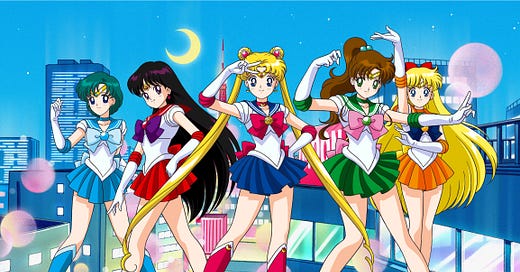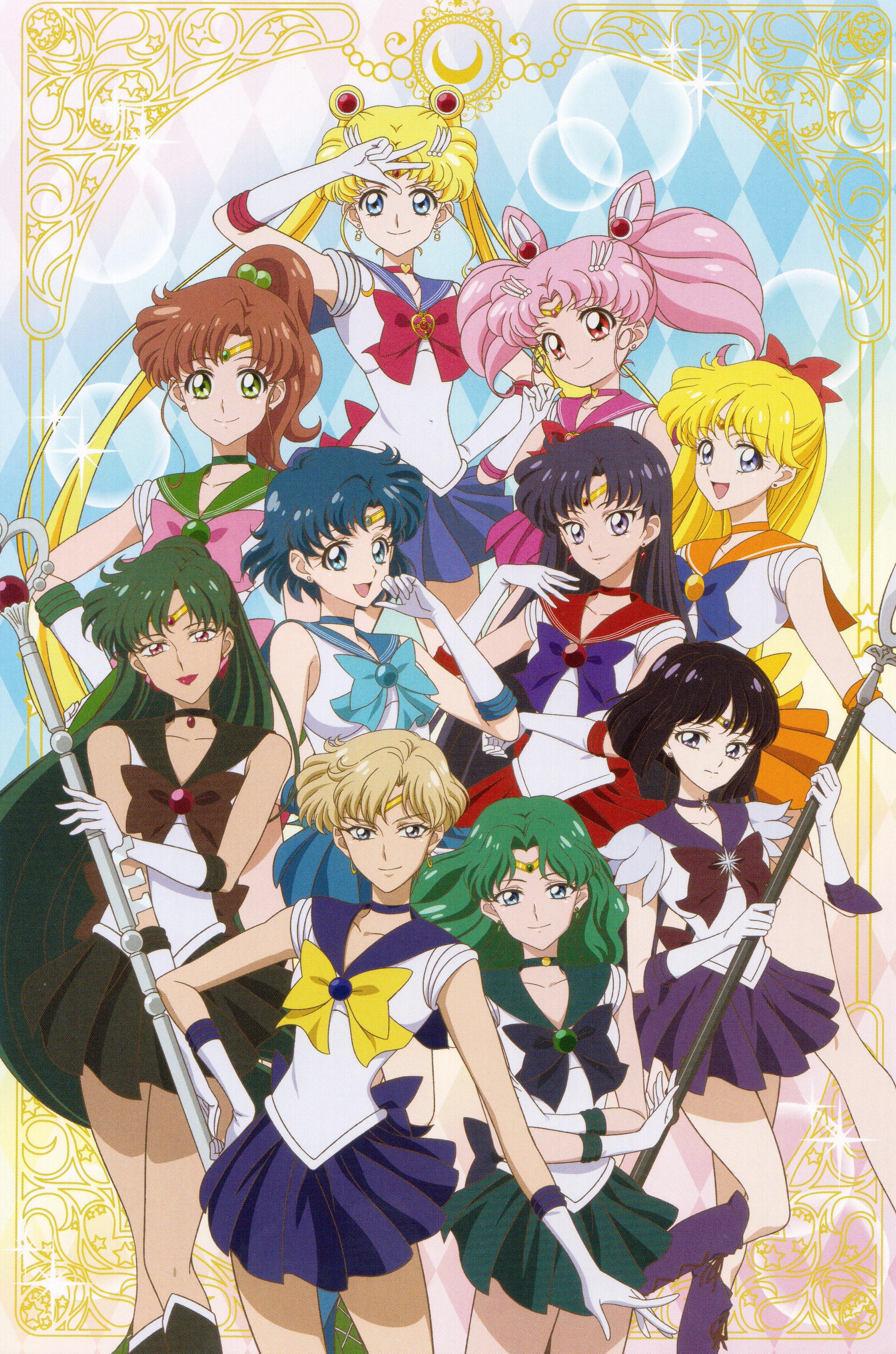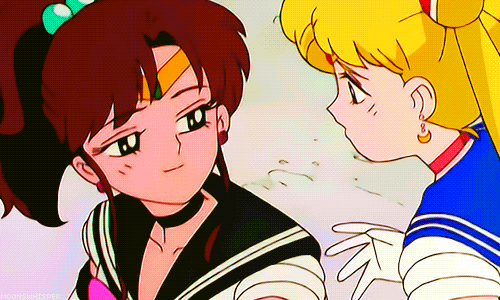Today (or tomorrow, since I live in North America at this time of writing), the 58th birthday belongs to… Naoko Takeuchi, the creator of this manga series! Takeuchi is married to Yu Yu Hakusho and Hunter × Hunter creator Yoshihiro Togashi. Today we’re talking about the 90’s popular anime based on the shojo manga… Sailor Moon! The series follows the adventures of the titular protagonist, Usagi Tsukino (Kotono Mitsuishi/Stephanie Sheh), a 14-year-old middle school student who is given the power to become a Pretty Soldier. Joined by other Sailor Soldiers, she defends Earth against an assortment of evil villains. The anime also parallels the maturation of Usagi from an emotional middle school girl to a responsible young adult.
Note: All voice actors/actresses are the Viz Media version. Be caeful! Some of the parts were originally written on Medium before moving to Substack.
As Usagi battles against the Dark Kingdom, she is joined by other girls also awakening as Sailor Soldiers: the timid but intelligent Ami Mizuno (Sailor Mercury; Aya Hisakawa1, thereafter Hisako Kanemoto in Crystal/Kate Higgins), the hot-headed miko Rei Hino (Sailor Mars; Michie Tomozawa, thereafter Rina Sato in Crystal/Cristina Vee2), the tomboyish but romantic Makoto Kino (Sailor Jupiter; Emiko “Emi” Shinohara (deceased 2024), thereafter Ami Koshimizu in Crystal/Bennett Abara3), and the aspiring idol Minako Aino (Sailor Venus; Rika Fukami, thereafter Shizuka Ito/Cherami Leigh). Minako is joined by Artemis (Yasuhiro Takano, thereafter Yohei Oobayashi/Johnny Yong Bosch), her feline advisor and Luna’s (Keiko Han, thereafter Ryo Hirohashi4/Michelle Ruff) partner. The Sailor Soldiers are often supported by the mysterious Tuxedo Mask, whose civilian form is Mamoru Chiba, a college student with whom Usagi eventually becomes romantically involved.
The name “Sailor Senshi” comes from sailor fuku (“sailor outfit”), a type of Japanese school uniform that the main characters’ fighting uniforms are based on, and the Japanese word senshi, which can mean “soldier”, “warrior”, “guardian”, or “fighter”. Sailor Moon creator Naoko Takeuchi created the term by fusing English and Japanese words. The now-closed DIC Entertainment/Cloverway English adaptation of the anime changed it to “Sailor Scout” for most of its run. According to Takeuchi, only females can be Sailor Guardians. In the anime’s fifth season, the Sailor Starlights are depicted as men transforming into women when changing from their normal forms into Sailor Guardians, rather than just being women disguised as men as they appear in the manga.
In Sailor Moon R, they learn that Chibiusa is actually Usagi and Mamoru's future daughter, and they also meet Sailor Pluto (Setsuna Meioh; Chiyoko Kawashima, thereafter Ai Maeda/Veronica Taylor5), who guards the Door of Space-Time. Eventually, the Sailor Soldiers battle against Wiseman, a dark force that was manipulating the Black Moon Clan with the goal of destroying Earth. Wiseman manipulates Chibiusa into becoming his minion, Black Lady, but the Sailor Soldiers eventually manage to free her of his control. Chibiusa is able to summon the Silver Crystal of the future and aids in the destruction of Wiseman. Afterwards, Chibiusa returns to her own time, now freed from the Black Moon Clan's corruption.
In Sailor Moon S, joining the Sailor Soldiers are Haruka Tenoh and Michiru Kaioh, who operate as Sailor Uranus (Megumi Ogata/Erica Mendez6) and Sailor Neptune (Masako Katsuki/Lauren Landa), respectively. The two are also seeking the Talismans for different purposes and come into conflict with the other Sailor Soldiers. Sailor Pluto returns to the present day as Setsuna Meioh; Chibiusa also returns, now donning her own magical girl identity of Sailor Chibi Moon. Chibiusa also befriends a sickly girl named Hotaru Tomoe (Yuko Minaguchi7, thereafter Yukiyo Fujii in Crystal/Christine Marie Cabanos8), unaware that she is the daughter of the Death Busters' leader, Professor Tomoe. Unknown to her, Hotaru is also Sailor Saturn, a Sailor Soldier capable of destroying entire planets. Haruka, Michiru, and Setsuna fear that Saturn's awakening will result in Earth's destruction and plead for Usagi to kill her.
The anime series’ original North American release (DIC/CWi) was the subject of heavy editing, which resulted in large amounts of removed content and alterations that greatly changed the original work.
Sailors Uranus and Neptune (Haruka Tenoh and Michiru Kaioh, respectively), two of whom are lesbians and the first two LGBT characters in the mid-1990s, were changed to “cousins”. LGBT characters have been modified to be more “heteronormative”, such as changing the characters’ gender to remove gender fluidness in characters or editing romantic pairings into close relationships with family members. The LGBT characters have been restored in the Viz Media release.
Scenes with brief nudity and bathing were also censored to hide more of the girls’ bodies. In a couple of scenes showing Usagi (formerly Serena) in the bath, the water level is higher to cover up more of her body. Any violence, including violence against children, was also removed. Some of the content has been restored in the Viz Media release.
The characters’ names have been changed in the anime. Most anime will Americanize or Canadianize names from Japan to North America. The Pokémon anime series still gives out dub names for the (human) characters, but not so much on humans since The Pokémon Company International took over before Ash and Pikachu left the anime series and Team Rocket (since Horizons) is notably absent. The characters’ names have been reverted to the original names in the Viz Media release.
To appease the FCC (and the CRTC) broadcast regulations, which wanted educational segments to be present at the end of children’s shows, a “Sailor Says” segment was added to the end of every episode of the anime series, as the segments featured the title character teaching children about life lessons or morals. These were not included in the Viz Media release.
And that, my friends, is how we describe Sailor Moon (including the censorship during the original broadcast) on Substack. Don’t forget to subscribe!
Hisakawa has since taken the role of Dragon Ball’s Bulma following the death of her predecessor (Hiromi Tsuru) in late 2017.
The same voice actress behind Miraculous Ladybug’s Marinette Dupain-Cheng, MAGI’s Morgiana, and Skullgirls’ Cerebella.
Known as Amanda C. Miller pre-September 2024.
The same seiyuu who voiced Miles “Tails” Prower in the Sonic franchise.
AKA the original Satoshi/Ash Ketchum in the Pokémon anime series.
Known for MAGI’s own Aladdin (the Disney version as well as the first two Kingdom Hearts games, IMO, is still crap — DON’T CLICK IT!) as well as the Puyo Puyo series’ Arle since Tetris and Nanatsu no Taizai/The Seven Deadly Sins’ Diane.
Known as the original Videl in Dragon Ball. Yuko Minaguchi was temporarily replaced by Shino Kakinuma when she took a 19-month hiatus to study in America.
Known for Madoka Magica’s own Madoka Kaname, Skullgirls’ own Filia, and the Puyo Puyo series’ Amitie since Tetris.







